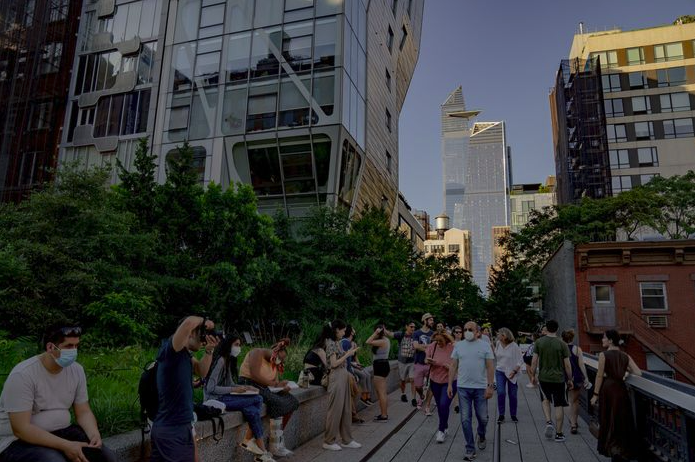The Wonderful World of Real Estate
We recently had a client tell us a funny-because-it’s-true real estate joke:
You walk into a party and see a crypto trader, a vegan, and a real estate agent—who do you talk to?
Of course, the punchline is that you speak to none of them and exit the party as quickly as possible—crypto traders, vegans, and, yes, real estate agents are well-known for talking non-stop about their passion! While we certainly let out an abashed laugh at this one, we argue that real estate can be one of the most interesting topics, if you do your research.
For this blog post, we’ve compiled some of the incredible trends and innovations happening in real estate. We think you’ll find them fascinating, and hey, you might even want to share one or two at your next cocktail party :)
3D-Printed Houses
You read that correctly—three-dimensional (3D) printing is being used to build houses right now, and the process is as easy as you think!
In California, Palari Homes and Mighty Buildings teamed up to create a new type of home that is both more efficient and better for the environment than traditional homes. The solution they found was 3D-printed homes—after a permanent foundation is laid, prefabricated components printed on a 3D printer are layered one on top of the other to build the home. Using this method, they are able to construct a home in less than 24 hours—traditional homes can take weeks.
This is not a futuristic, blink-and-you’ll-miss-it fad either, Palari Homes and Mighty Buildings have a waiting list over 1,000 names long.
In addition to producing no wasted material, there is also less need to move heavy objects around with industrial equipment. Palari Homes estimated that two tons of carbon emissions are eliminated when switching from traditional to 3D-printed housing due to the reduced number of lorry journeys.
Better speed, better environmental efficiency, and a much lower cost; 3D printing certainly seems poised to take over home building. In Malawi, a joint venture called 14Trees is able to print new homes in less than 12 hours for under $10,000. This is incredible news for the 1 in 5 people across the world who lack adequate housing (approximately 1.6 billion people).
While we haven’t seen any commercial applications yet, the German government has approved the construction of a 3D-printed apartment building and Dubai would like at least a quarter of its construction to be 3D-printed by 2030. As the technology becomes more mainstream it's sure to attract a plethora of commercial applications including stores, warehouses, and office space.
Transforming the Old and Unused
Imagine receiving an invite to an exclusive party complete with a breathtaking view of the water, a multitude of high-end restaurants, and a beautiful pedestrian walkway through flourishing gardens. Sounds amazing, right? Now, imagine you found out this party was taking place on an old, abandoned bridge.
If Flying Truss LLC has its way, that scenario will very much become a reality. The company is transforming an old, abandoned railway bridge in Kansas into a fully stocked entertainment powerhouse.
It’s not an unproven concept, either—other developers have had plenty of success converting unused infrastructure into exciting tourist destinations, reviving the structure and the areas nearby. Of special note is the High Line in Manhattan, a former elevated railway that is now a very popular public park.
While you may be thinking, is it safe to build on abandoned bridges, the answer is a resounding yes! Railways have been on the decline since early in the 20th century, and although unused for decades, many bridges are in excellent condition as they were built to carry heavy loads and resisted corrosion more than car bridges as they were never salted. Many are situated next to former industrial areas that are being turned into hip tourist attractions. For developers looking for the next big thing in public attractions, the question shouldn’t be, why bridges, but why not!
The next time you get invited to an abandoned bridge party, say yes!
Making the Exotic Local
Source: https://tangramnyc.com/en/
Not every North American is lucky enough to be able to visit Shanghai in China, but many can afford a trip to New York City. This, and the 2.5 million Asians living in New York City and the tri-state area, is what’s driving an incredible new $800 million development designed to bring the Shanghai experience to New York.
Set in Flushing, Queens, the Tangram project, as it’s called, is being developed by F&T Group and SCG America and plans to offer an authentic Shanghai experience. For instance, the anchor store won’t be a TGIFridays or Saks Fifth Avenue, but instead Xiao Long Kan Hot Pot, a restaurant few Americans would recognize but that is extremely popular in China.
When finished, the 1.2 million square foot area will be completely bilingual with signage required in both English and Chinese. In addition, the fitness studio will be the first national chain to offer exercise classes in both languages.
There will also be a mall and hotel, condominiums, and an 85,000 sq. ft. office space complex. It is being built to feel as if one is actually in Shanghai without leaving New York. Whether or not the developer achieves this remains to be seen, but MCRE, for one, is excited to check it out!
REFERENCES
The rise of 3D-printed houses. (2021, August 18). The Economist. Retrieved February 26, 2022, from https://www.economist.com/science-and-technology/the-rise-of-3d-printed-houses/21803667.
Kadet, A. (2021, November 16). New York Developer Bets on $800 Million Project to Make Queens Feel Like Shanghai. Wall Street Journal. Retrieved February 26, 2022, from wsj.com/articles/new-york-developer-bets-on-800-million-project-to-make-queens-feel-like-shanghai-11637067601.
Putzier, K. (2021, November 23). Kansas Bridge That Once Carried Cattle Cars to Become an Open-Air Food Court. Wall Street Journal. Retrieved February 26, 2022, from https://www.wsj.com/articles/kansas-bridge-that-once-carried-cattle-cars-to-become-an-open-air-food-court-11637672401.






